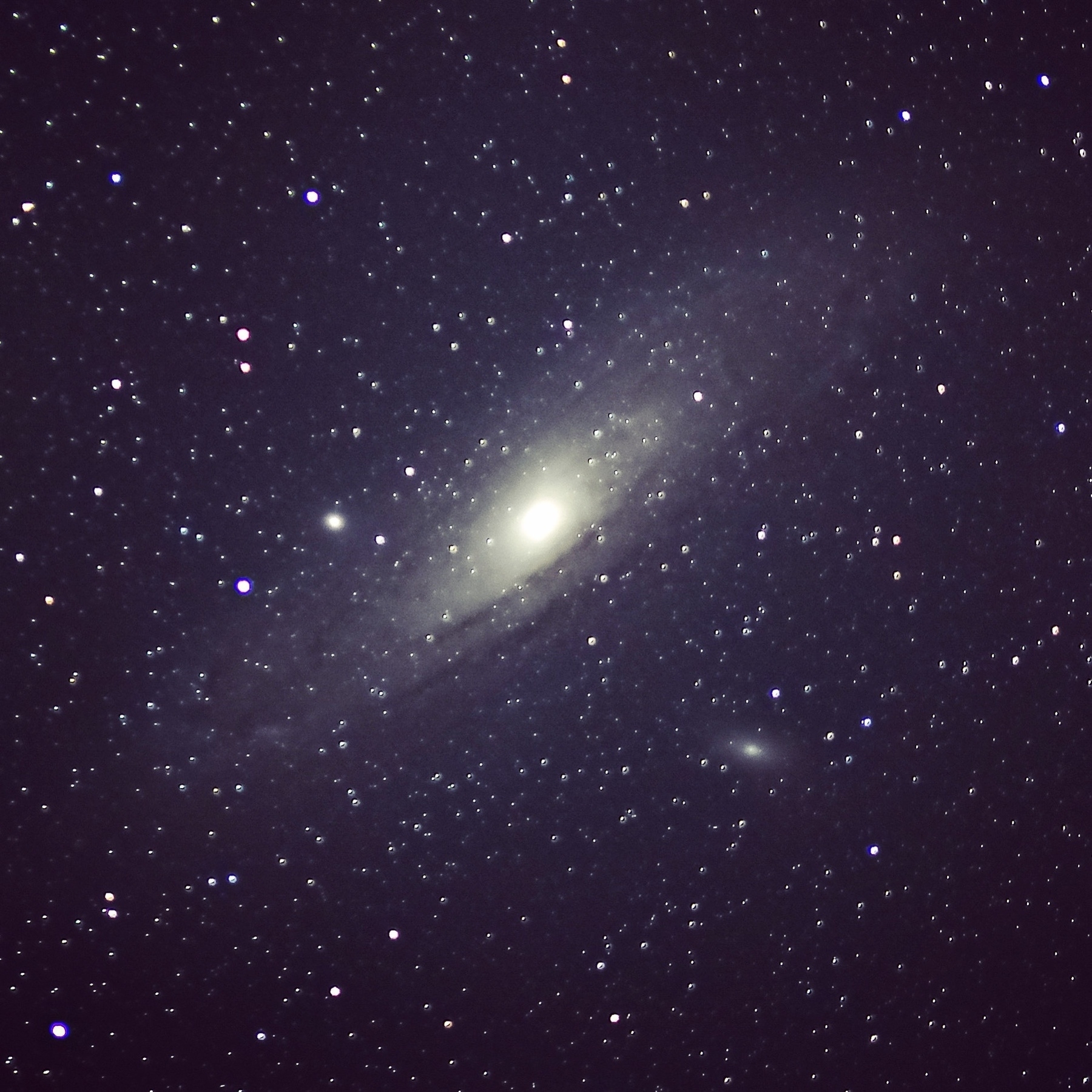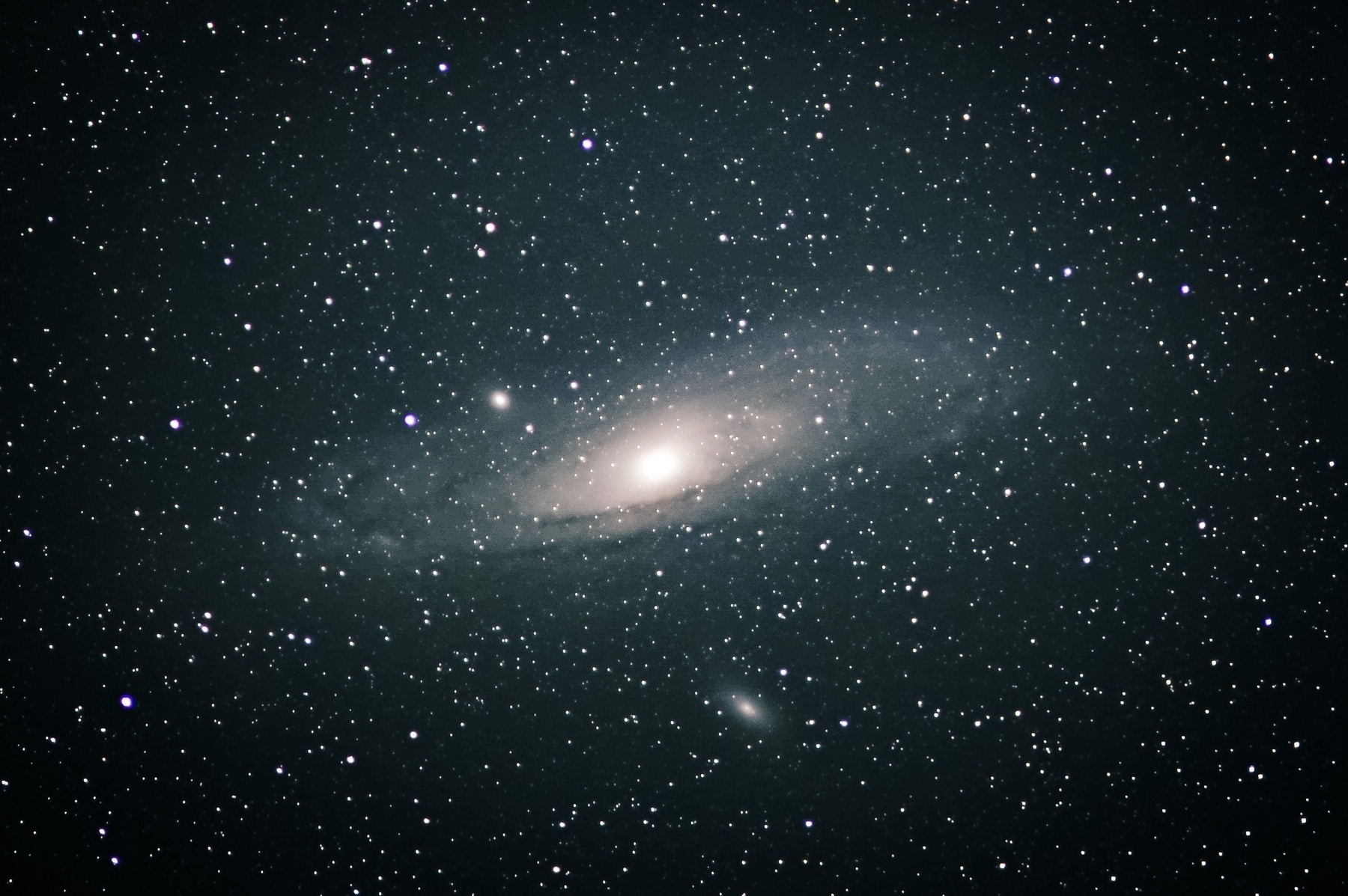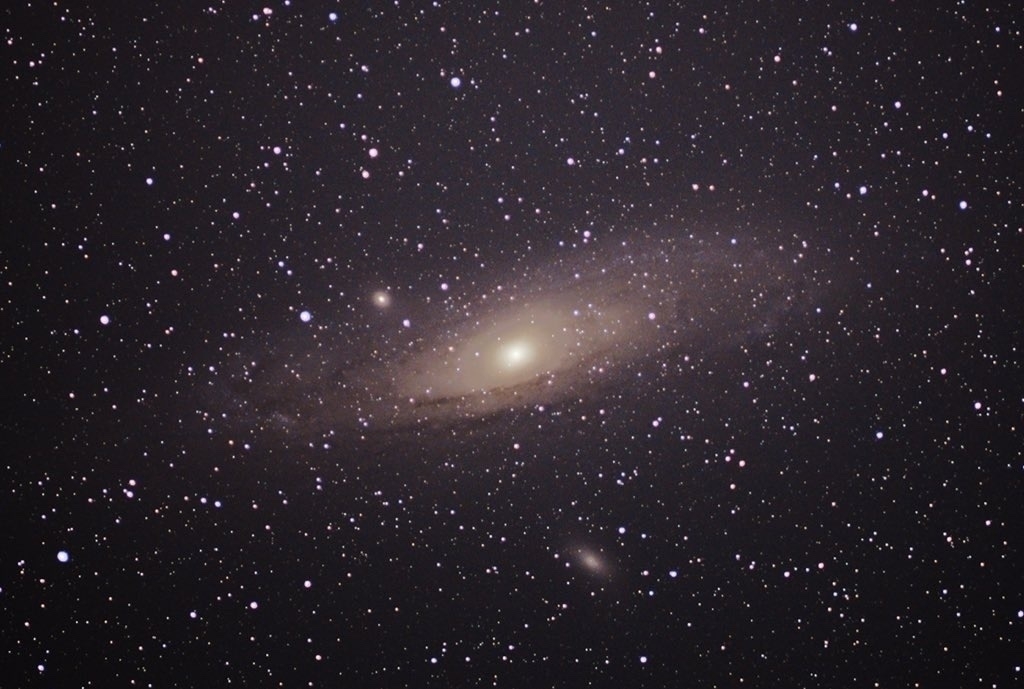galaxy
Supernova SN2023ixf
Supernova SN2023ixf was spotted on May 19th and it continues to brighten. Took the top image on May 23rd and for comparison is an image from April 30th on the bottom. This supernova will continue to brighten over the next few days. This supernova is in galaxy M101 which is 21 million light years away. That means the event we are watching "live in real-time" actually happened 21 million years ago.
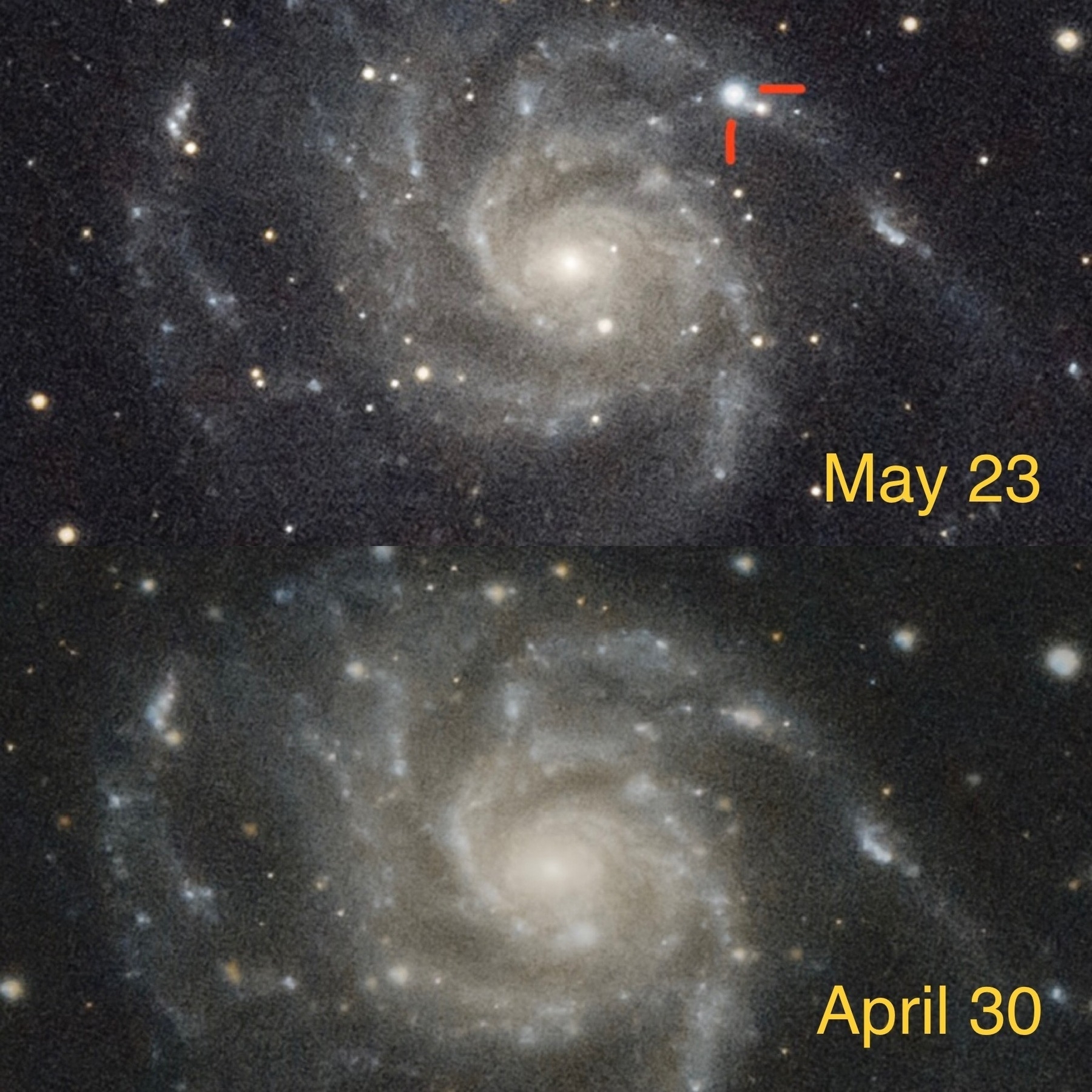
Wide angle long exposure photos
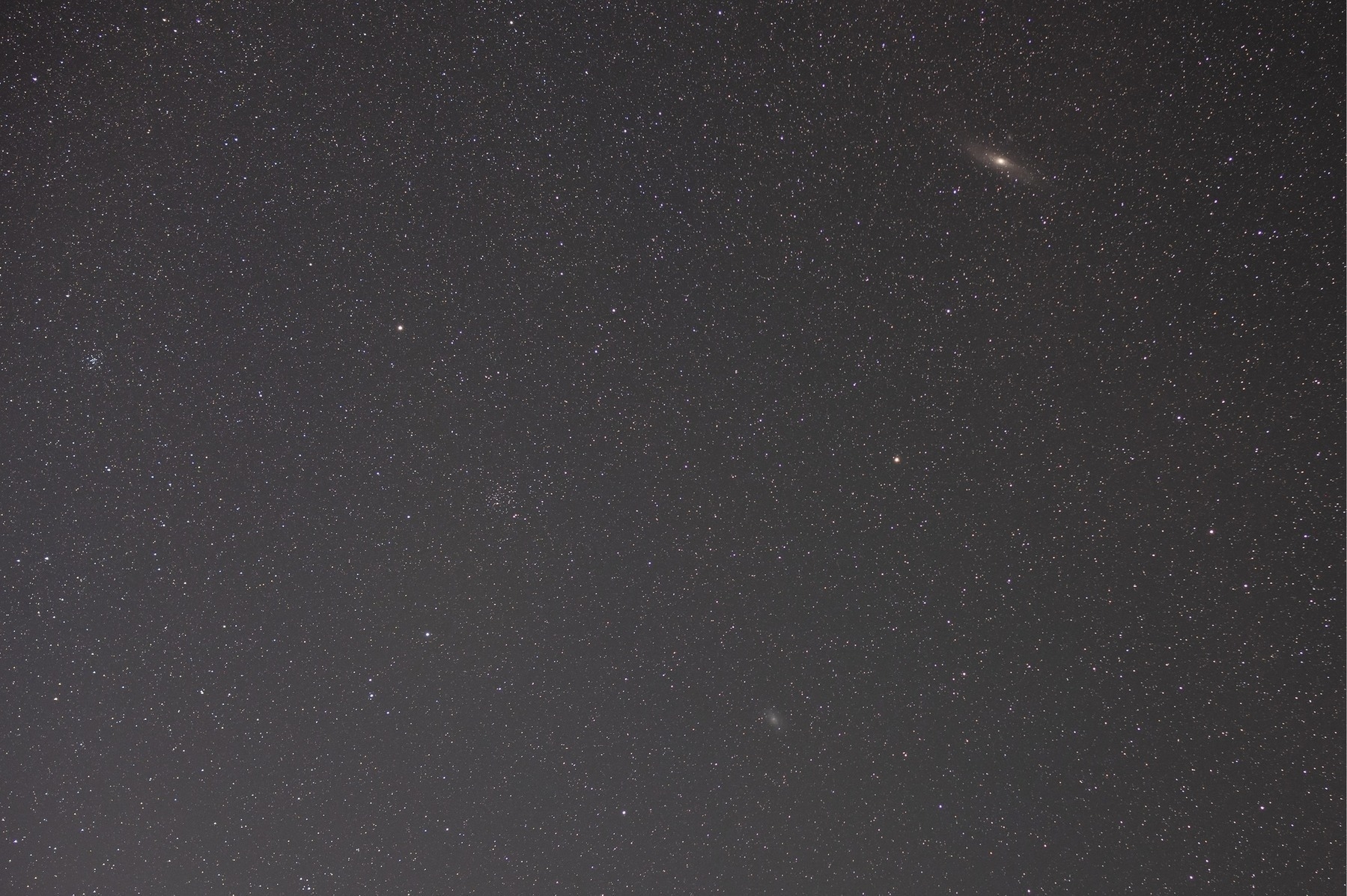
Playing with long exposure (3 mins) photos with a 40 mm lens attached to Nikon Z6 on a SkyWatcher star tracker. Here is one that shows Andromeda galaxy (M31), top right and Triangulum Galaxy (M33), bottom center. Also two open star clusters: M34 in Perseus (left edge) and NGC 752 in Andromeda (left center). This is just a single image with contrast adjustments in Photoshop, not a stack of multiple images.
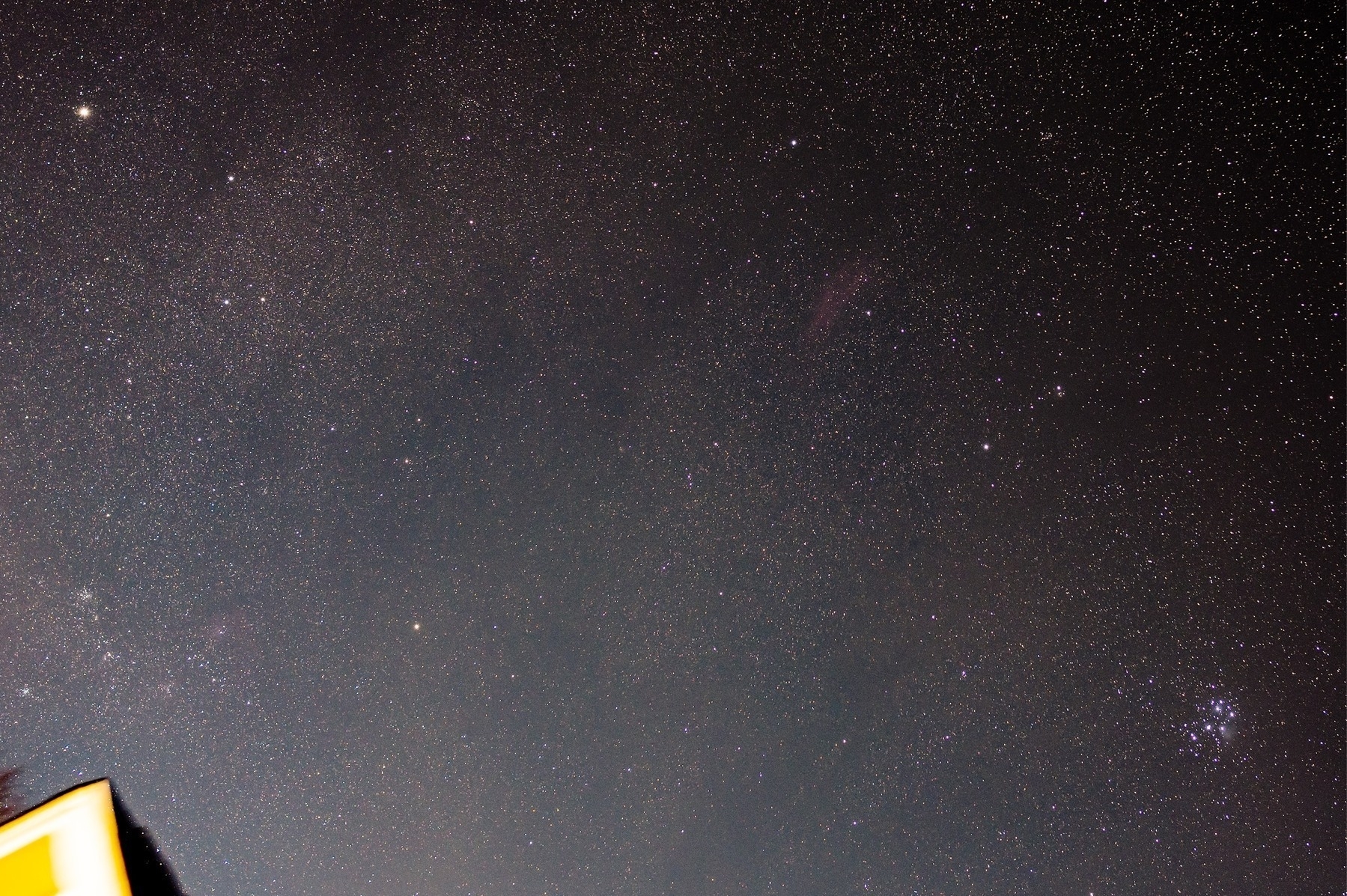
Another long exposure (3 min) photo showing Pleiades (bottom right), and ghostly reddish glow of California nebula (right of center). The bright star at top left is Capella and just above the roof, open clusters M36 and M38 are seen along with Flaming star and tadpoles nebula region in Auriga.
Andromeda galaxy - Sep2022

My best Andromeda galaxy image so far. It is only 30 minutes of total exposure but autoguiding makes a huge difference by making all the details clear and sharp. Have to collect more data on the next clear night.
The Andromeda Galaxy, also known as Messier 31 (M31) is a barred spiral galaxy approximately 2.5 million light-years from Earth and the nearest major galaxy to the Milky Way. It is larger than Milky Way galaxy by about 25-50%. Two other galaxies are in this view - M32 (above M31) which is a satellite galaxy of M31 and M110 (bottom of frame) which is also part of the Andromeda group of galaxies.
Telescope: William Optics Zenithstar 61; focal length 360mm
Optolong UV/IR cut filter
Camera: ZWO ASI533MC-pro, cooled to -10C
1 minute exposures with auto guiding; total exposure of 30 minutes;
used dark, flat, bias calibration frames
Processed in SIRIL and PhotoShop
M51 - reprocessed
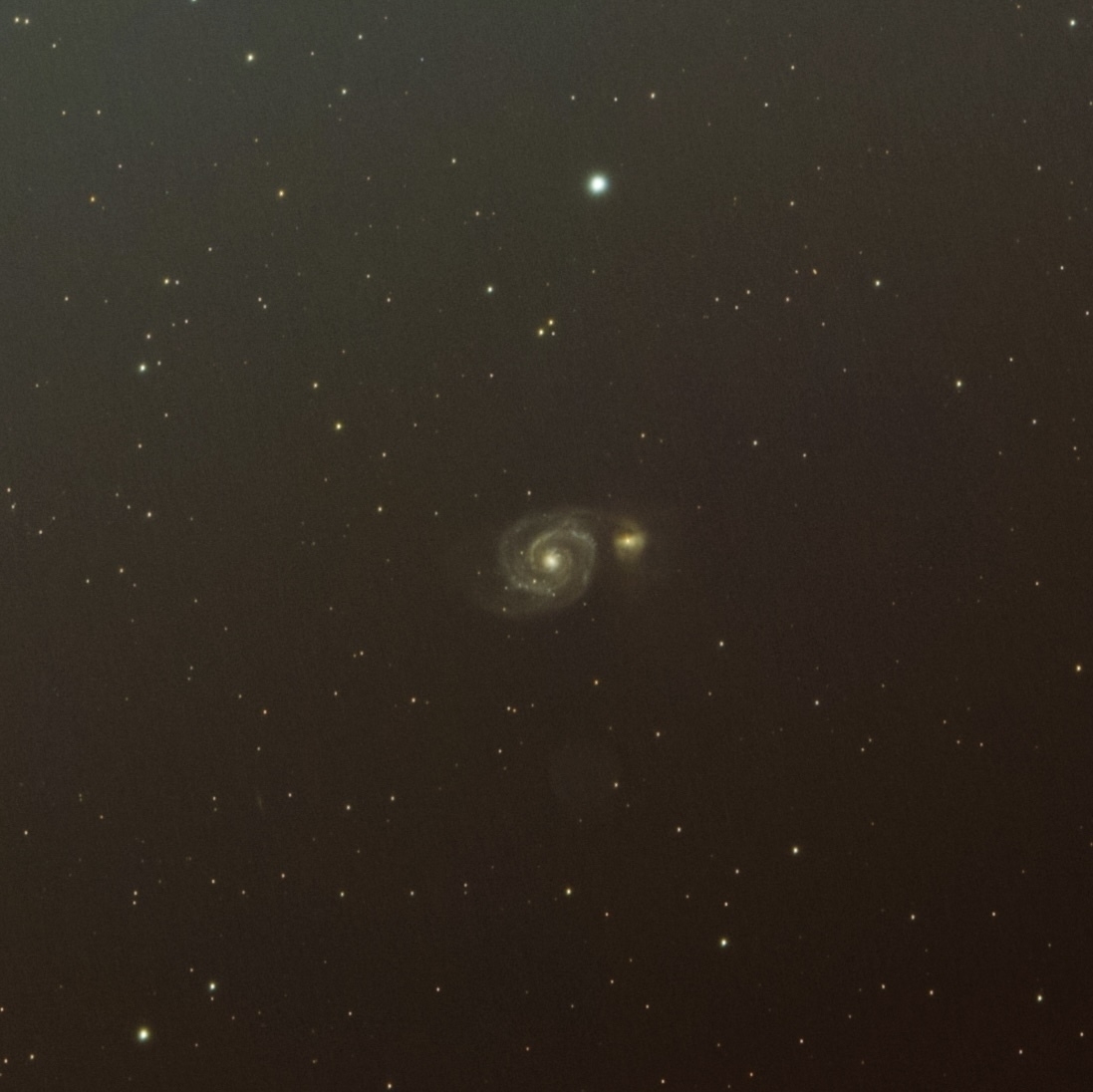
Back on April 21st, I captured an image of the Whirlpool galaxy (M51) and processed it without any calibration frames as I didn’t have flat frames that night. I took some flat frames on the following morning but forgot about it. Finally got around to use a full set of calibration frames (dark, flat and bias) and the result is quite remarkable. Just needed that extra hands-on validation to keep using calibration frames in my workflow.
Pinwheel galaxy
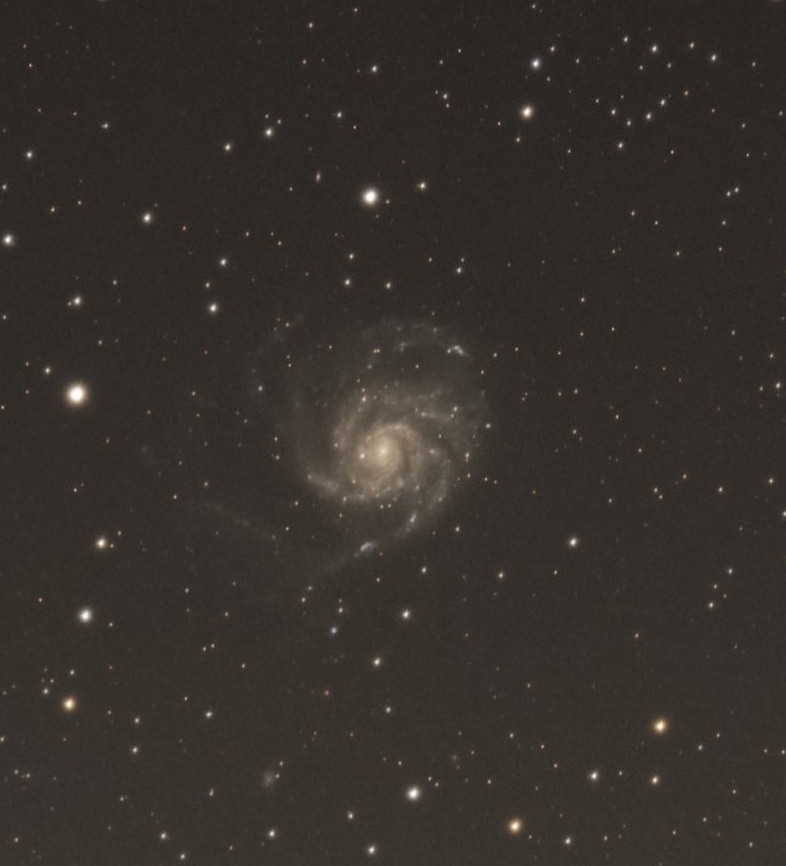
The Pinwheel galaxy aka M101 is located in Ursa Major. This face on spiral galaxy is about 21 million light years away. It is a bit larger than Milky Way and has around a trillion stars.
This image is a stack of 2 minute subs totaling ~3 hrs of exposure.
Taken with William Optics ZenithStar 61 - Nikon Z6; processed with Siril and Photoshop.
M51 - The Whirlpool galaxy
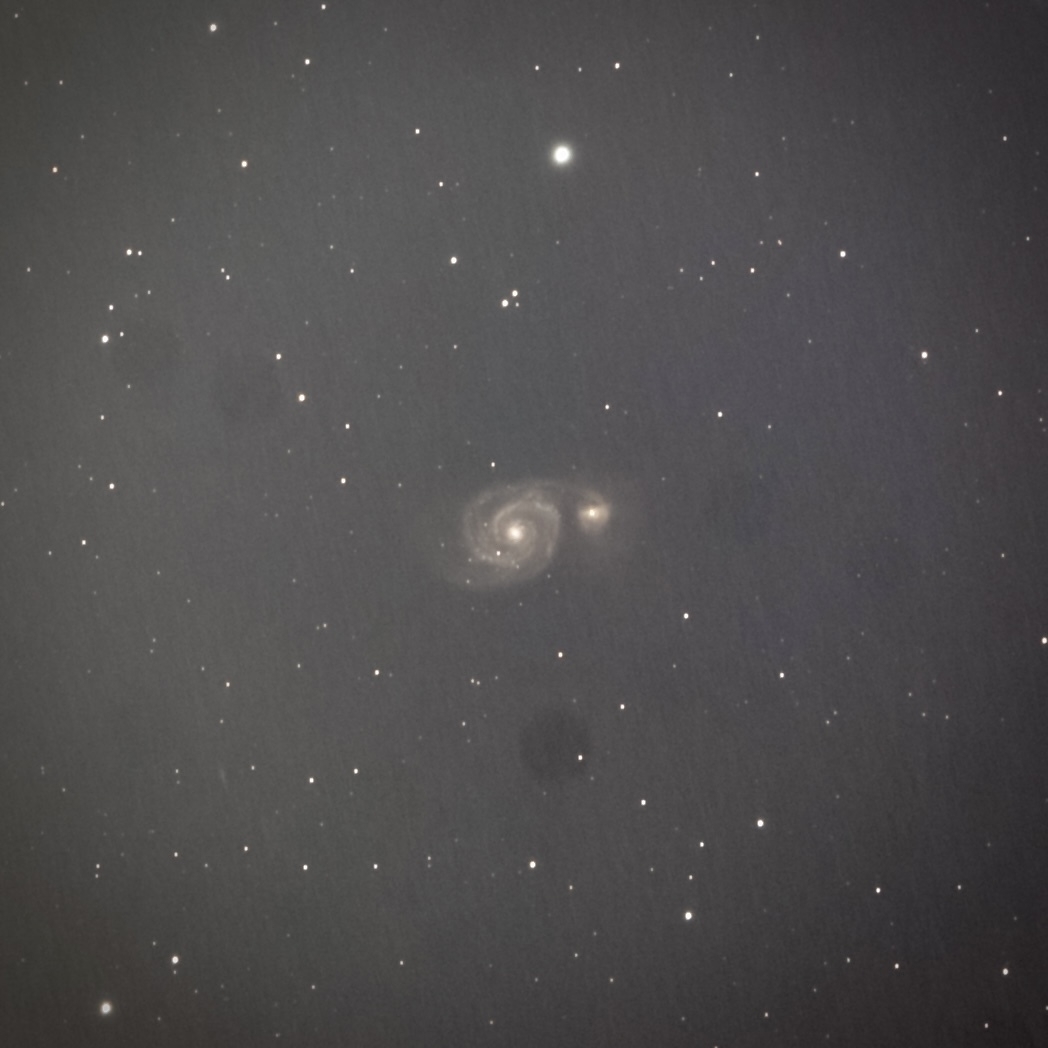
I find M51 as one of the most striking images of a galaxy. M51 aka the Whirlpool galaxy along with its companion dwarf galaxy NGC5195 can be seen interacting with each other. This pair of galaxies is located in the constellation of Canes Venatici and is located about 28 million light years away. It is about half the size of our Milky Way and contains only about 10% of the mass. This top-down view allows us to take in the expanse of the spiral arms of this galaxy.
This photo was taken with a full moon very close to the target and it was very difficult to eliminate the bright background due to moonlight. It is a stack of 59 two-minute exposures taken with a Nikon Z6 attached to William Optics ZenithStar 61. The images were processed using SIRIL and Photoshop.
Markarian's chain
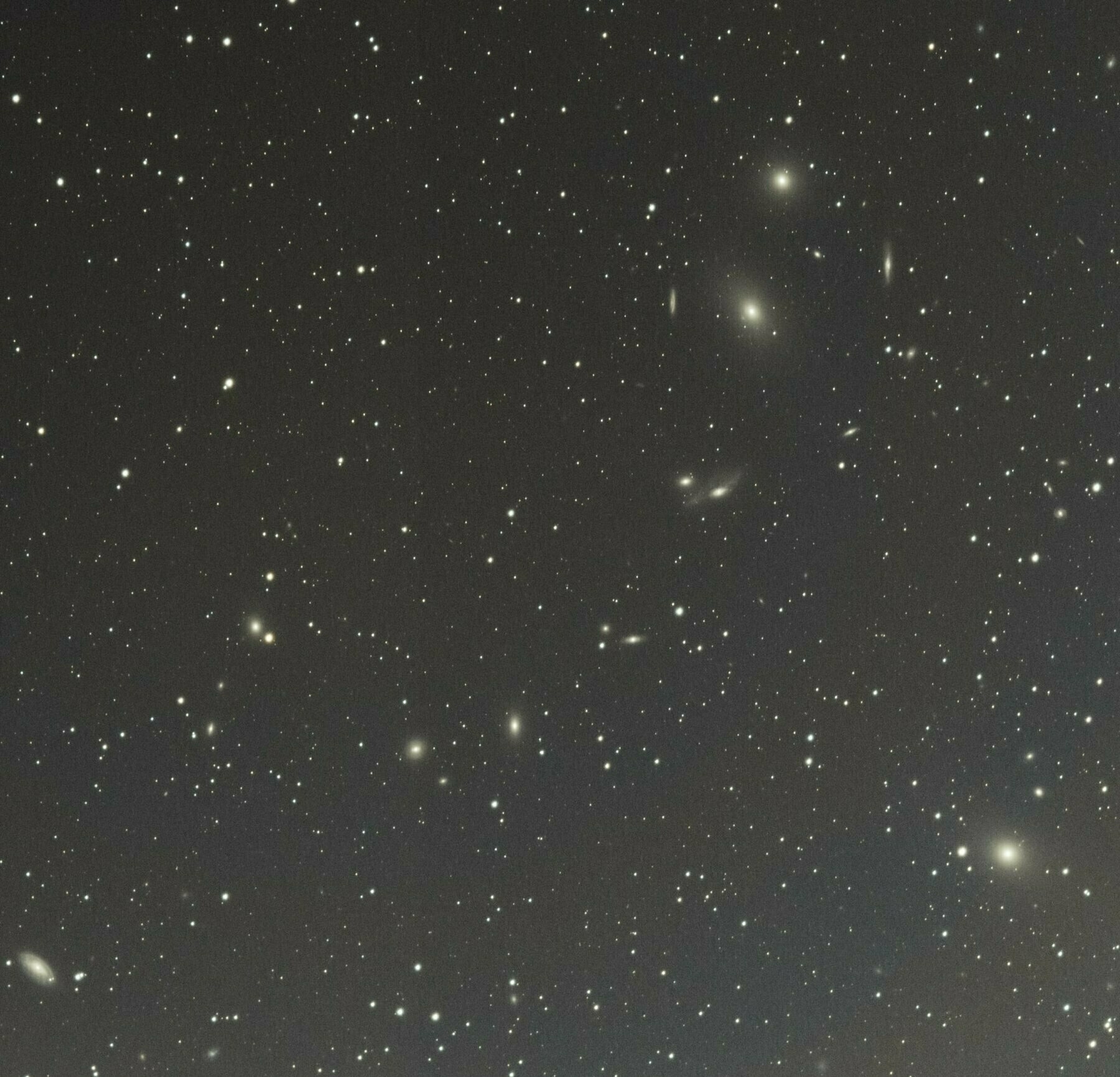
This is my first try at capturing Markarian’s chain in Virgo. This is a stretch of galaxies that are part of the Virgo cluster. I have seen images of this part of the sky and marveled at the rich field of galaxies. Finally, I was able to get the same view with my own equipment. This is only 1 hour of total exposure and it blows my mind. So many galaxies in one view - billions of stars.
The full frame of the cropped photo above, shows many more galaxies from edge-to-edge of the picture. I could mark about 50 galaxies but there are many more in this field of view. The whole cluster is about 50-70 million light years away.

There are some galaxies here that have some interesting facts and features. Those are annotated in this image with the description below.
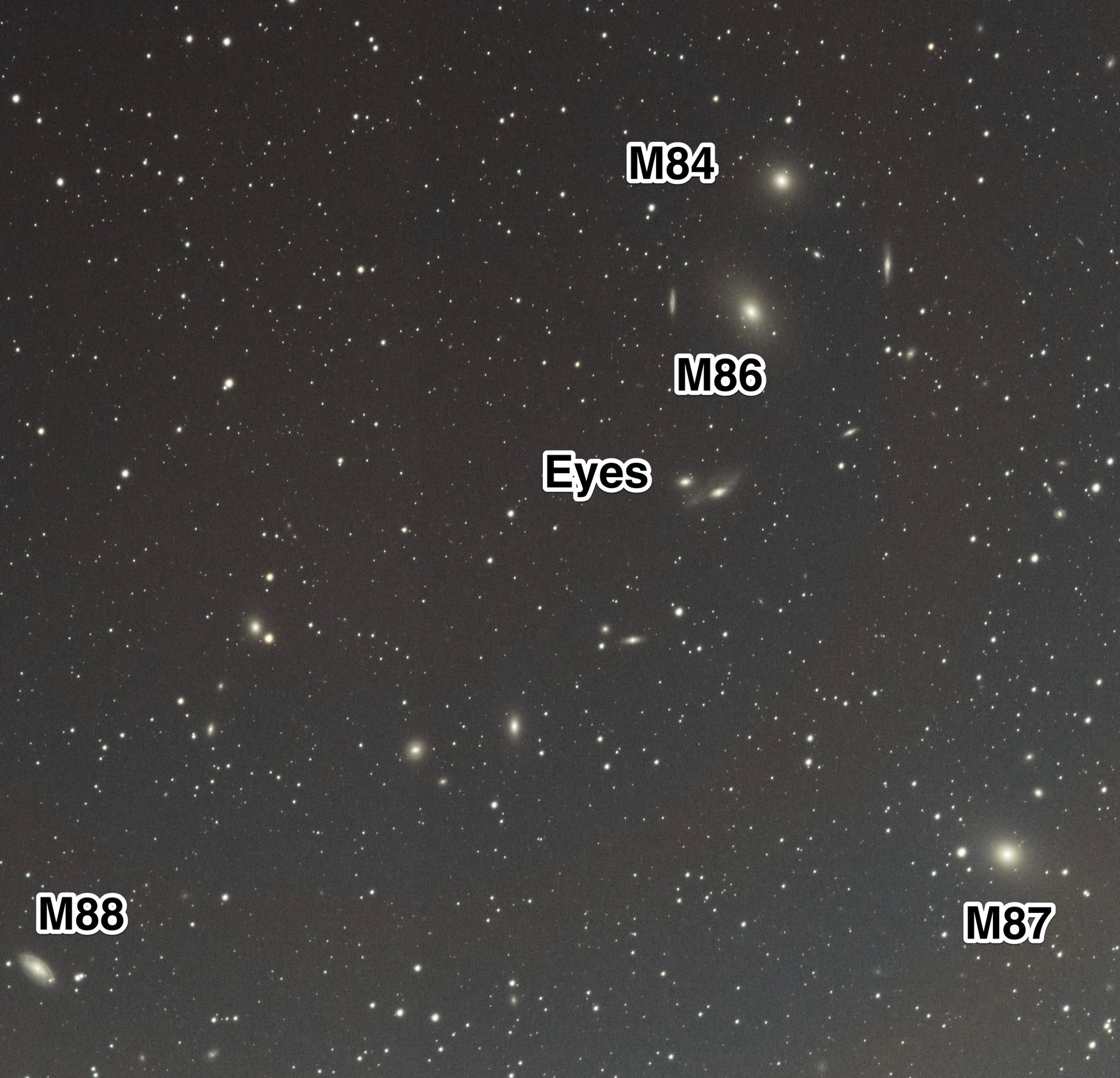
M86, an elliptical galaxy has a large blue shift indicating that it is moving towards us at 280km/s. Actually it is getting pulled towards the core of Virgo cluster but relatively towards us.
M87 aka Virgo A is a giant elliptical galaxy which is one of the strongest known radio source. It is larger than our home galaxy, Milky Way and contains about 12000 star clusters which is a lot more compared to ~150-200 in Milky Way. It also has a supermassive black hole at the center that amounts to 2-3 billion solar masses.
M88 is a spiral galaxy. It looks like miniature Andromeda galaxy due to its orientation. It is moving away from us at 2000 km/s.
M84 is also an elliptical galaxy that is one of the brightest in the Virgo cluster. Three supernovae have been observed in this galaxy in 1957, 1980, and 1991. This is unusual for an elliptical galaxy.
The Eyes galaxies appear at about 100,000 light years from each other but they were probably as close as 16,000 light years and it appears that the galaxy on the right has stripped some material from the galaxy on the left.
I have been frustrated with all the cloudy skies over the last couple of months and not getting enough dark sky time. That has made me an impatient observer. I have to get out of this impatient phase where I jump from target to target & spend more time on one target to get better images.
Galaxies in Leo
Spring is officially galaxy season. Here are two groups of galaxies from the constellation Leo captured on two separate nights. In these images you can see billions of stars as each galaxy contains hundreds of millions to billions of stars.
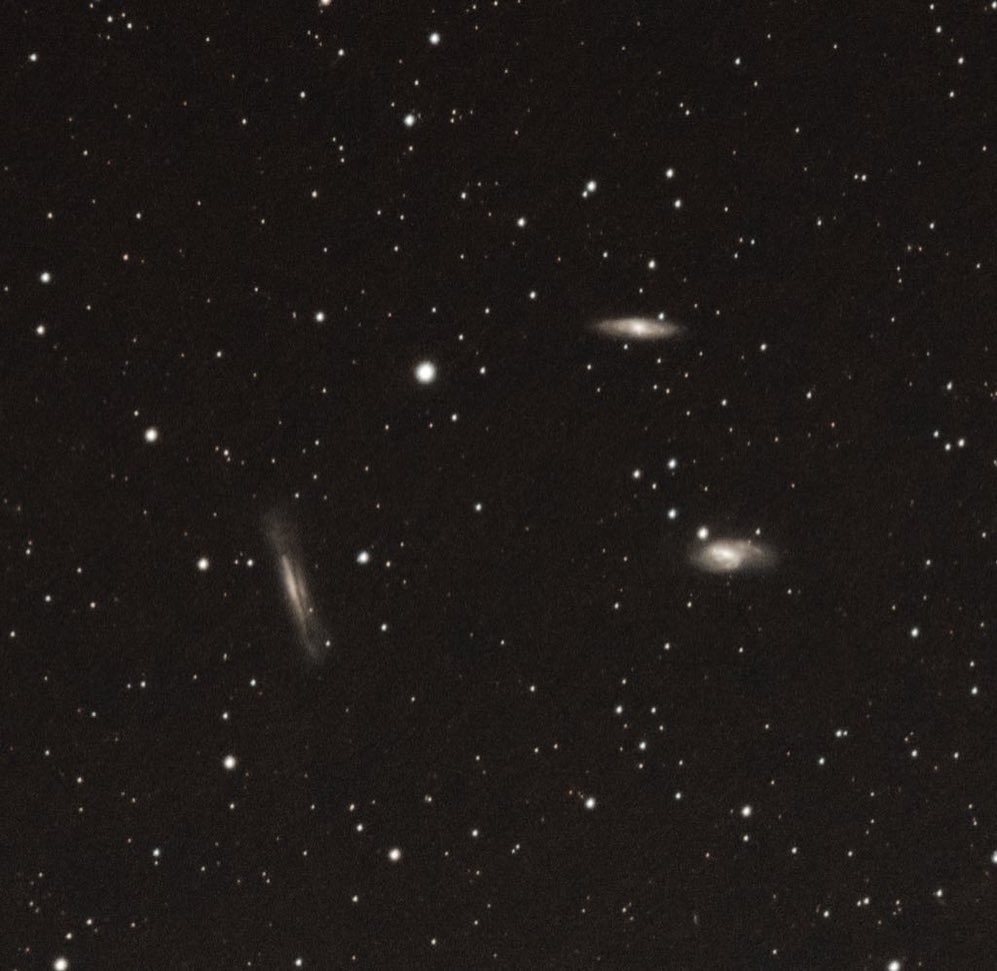
1: The famous Leo triplet. (L to R) NGC3628 aka hamburger galaxy, M65 and M66
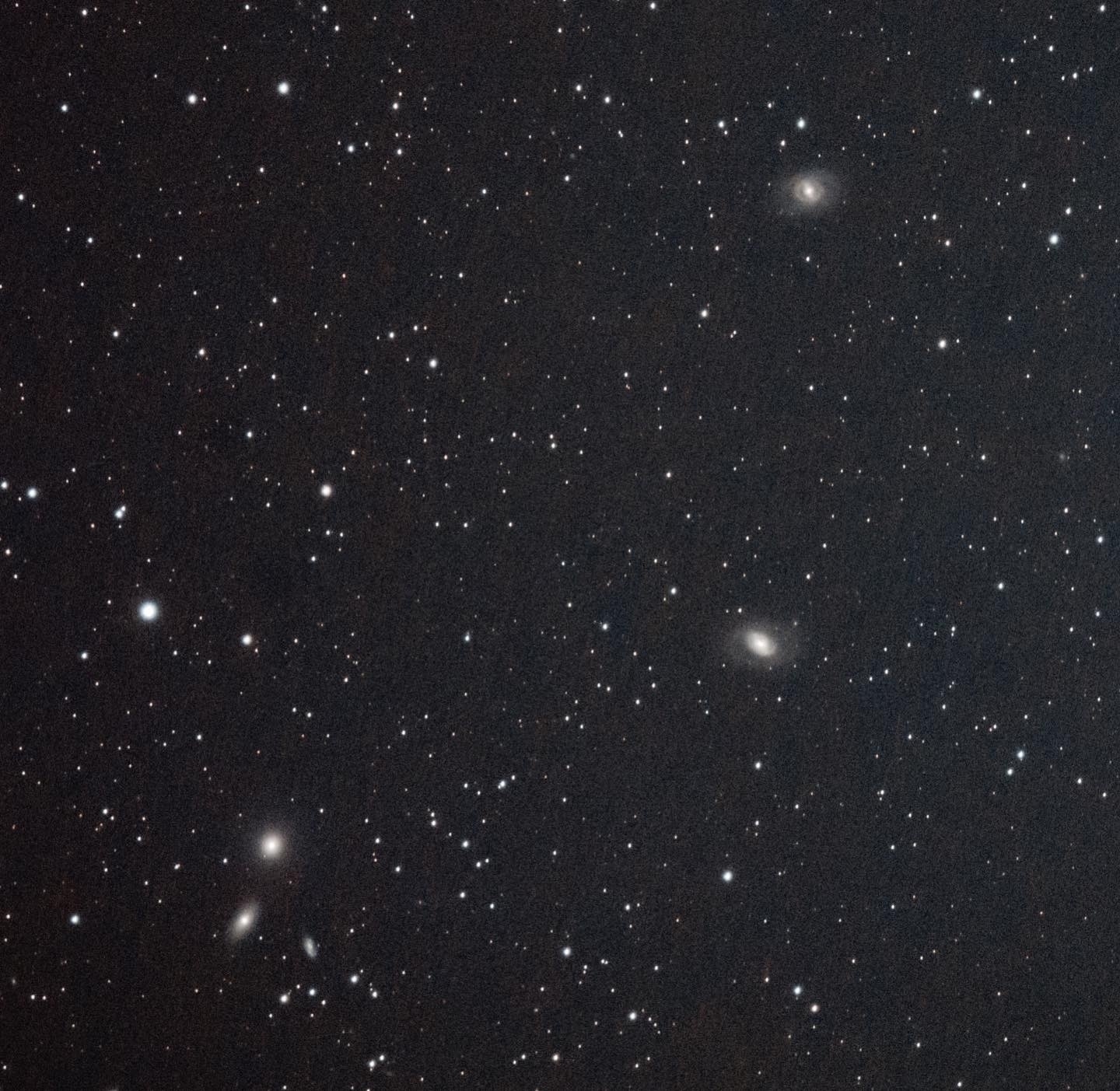

2: M95 and M96 on the right of center, M105, NGC3384 and NGC3389 bunched up towards the left bottom corner. NGC3389 is probably the farthest object that I have intentionally captured in a photo - at about 70 million light years away. Only 5 galaxies are annotated here but, there are many faint ones in this view as well.
Both images are short exposures - only about an hour each. Clouds foiled my plans on both nights when I was imaging these.
WO ZS61 - Nikon Z6 - Siril - PS
M33 : Triangulum Galaxy

Triangulum Galaxy (M33) is a spiral galaxy that is ~2.7 million light years away. It is one of farthest deep-sky objects that is visible to naked eye. With a diameter of about 40,000 light years, it is smaller than Milky Way and is a part of the local group of galaxies with Andromeda and Milky Way. Many of the emission nebulae and star clusters from this galaxy can be clearly seen even through a small telescope. These objects have their own entries in NGC catalog and observing them has been helpful in our understanding of structures and formation of galaxies.
🔭 WO ZS61 - Optolong LeNhance
📸 Nikon-Z6
40x3min subs captured with dark, bias and flat calibration frames; processed with Siril and PS
M81 and M82

Reprocessed data from June 2021 for Bode's galaxy (M81) and Cigar galaxy (M82) from Ursa Major. These galaxies are about 12 million light years away and are a part of our local group of galaxies along with Andromeda galaxy and Milky Way galaxy. This image is a short exposure of only about 30 minutes (18 x 99 secs) taken with Nikon Z6 attached to William Optics ZenithStar 61. Hoping to get longer exposures next time.
Andromeda Galaxy
The Andromeda Galaxy, also known as Messier 31, M31, or NGC 224 and originally the Andromeda Nebula, is a barred spiral galaxy approximately 2.5 million light-years from Earth and the nearest major galaxy to the Milky Way. ... From Wikipedia
This is one of those objects that can be easily seen with naked eyes under dark skies. I have seen it many times that way and with the aid of a telescope. It still appears as a smudge with small amateur telescopes. Unless the astrophotography techniques of long exposures and stacking is applied, its beauty is not apparent. Last year, during the pandemic I started playing around with astrophotography and this was one of the first targets that I imaged. Here are 3 images taken over the last few months and it is obvious that my technique is getting better with time. I like seeing the dust lanes making the spirals of the galaxy. Hoping to get better images of M31 again later in the year when it rises again in the East.
Stargazings 10-18-08
It was a quick half hour session with Adit calling me to come in every 5 minutes. A clear and cold night made everything look very beautiful. These sky conditions along with the good quality optics of William Optics Megrez 90 were responsible for excellent viewing with good contrast. Here is what I was able to catch:
Jupiter: All four moon visible; all were on the same side.
M22 and M28 from Saggitarius: It was my first time to see these two clusters. They can be found around lambda Saggitarius. M22 is a big and very dense, nice looking, globular star cluster. Very easy to spot. M28 is much smaller and fainter.
M57: “Ring nebula” a planetary nebula from Lyra.
M56: a globular star cluster from Lyra. It lies on the straight line between M57 and Albeiro (beta-Cygnus), almost at the midpoint.
Albeiro: Famous double star in Cygnus. Two bright colorful stars: Orange and blue.
M31 and M32: Andromeda and its companion galaxy.
NGC869 and NGC884: Double cluster in Perseus.
